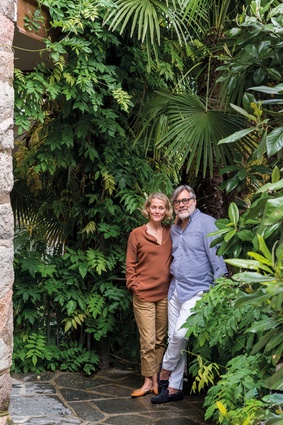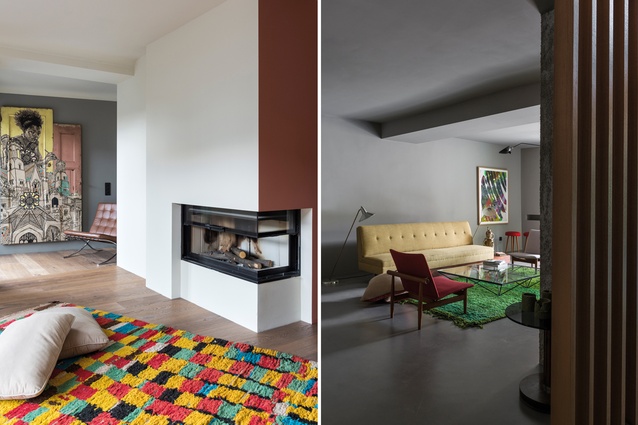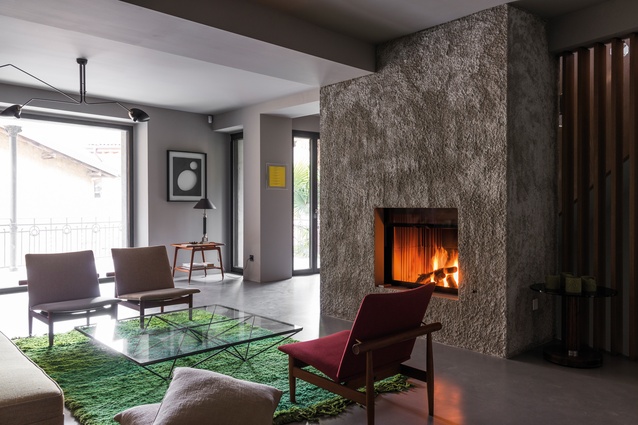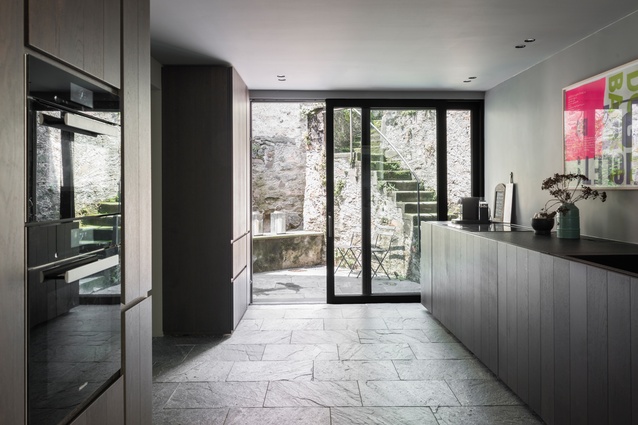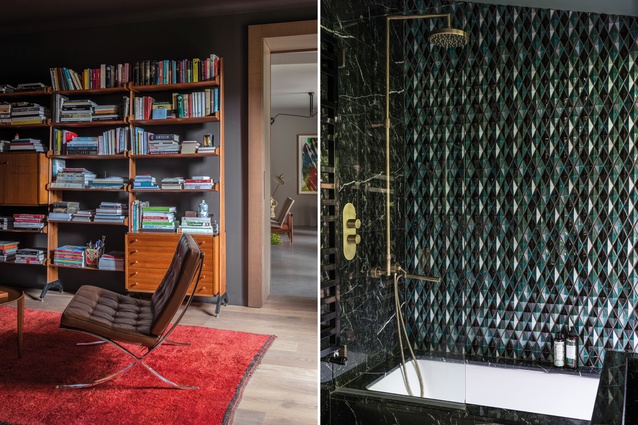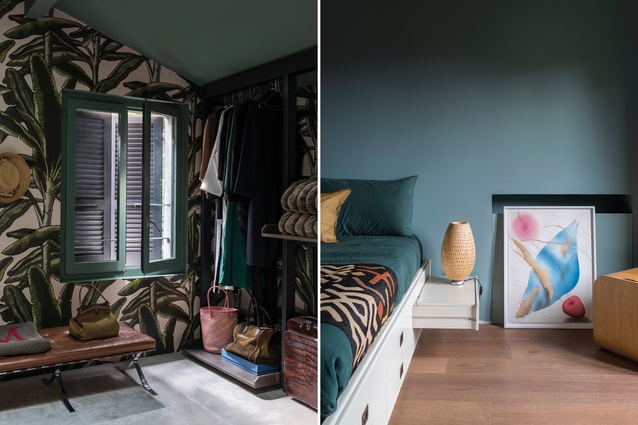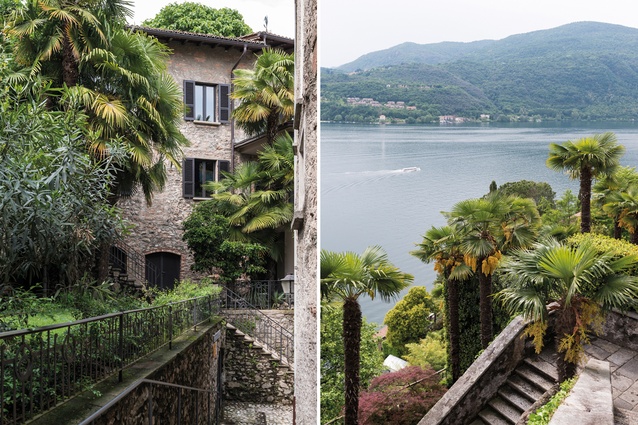A home of two halves: Swiss renovation
A sprawling 16th-century Swiss house near Lake Lugano pays homage to two eras and to the couple that has lovingly restored it.
Anton Magnani and Birgit Kollhof, the owners of this Swiss house, are the type of people that seem to be at home anywhere in the world. They have roots and connections in many different countries and speak multiple languages. Yet, regardless of their urbane nature, this cosmopolitan couple has decided to settle down in the countryside.
True, their village of choice, Morcote, has recently been selected as the most beautiful village in Switzerland by a group of local TV and publishing companies. But, even before this enchanting spot on the shore of Lake Lugano was officially designated as such, the pair had already been toying with the idea of buying a centuries-old stone house in the centre of the historic village.
Their lucky break came when the selling price finally fell in line with their budget, and they pounced and began to transform the house soon after settlement.
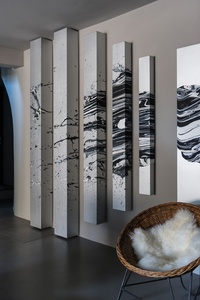
The project was not without its challenges, however; the property is situated on a terraced slope and is spread over a series of levels, each with its own views and atmospheres, and home to a number of nooks and crannies. It is also a heritage-listed building, therefore subject to strict planning conditions and restrictions – it was built in the 16th century and extended in the 18th.
In addition to all of these parameters, the couple had one very specific starting point when they moved in; they would have to find a place to hang one of their favourite paintings, Riding Awareness by the Icelandic artist Katrin Fridriks. At more than four metres long, one room was suitable, luckily, for hanging the hexaptych (six-panelled painting). Although this was, at least, a start, Magnani and Kollhof had to do some serious thinking about what to do with the remainder of the 450m2 house.
The task was made easier by the fact that they both work in creative industries – Kollhof designs shoes and bags in Milan, and Magnani is currently helping to re-energise a venerable firm of bag manufacturers in Florence – so they have considerable experience in employing materials and colours to create and develop their unique visions.
The newer part of the house (which is still more than 300 years old) was designated as the ‘modern’ area, with the walls painted in shades of grey and a concrete floor laid. In this area, selected vintage armchairs by Finn Juhl and a couch by George Nelson form a restrained cluster of furniture around the fireplace.
Mid-century references, such as diamond-like hanging lamps by Stilnovo and oak panelling, give the modern area a level of glamour tinged with nostalgia. A favourite space for socialising, this part of the house is accessed directly from the front door via a narrow staircase – an architectural move which forms a boundary of sorts (both aesthetic and thematic) with the older part of the building.
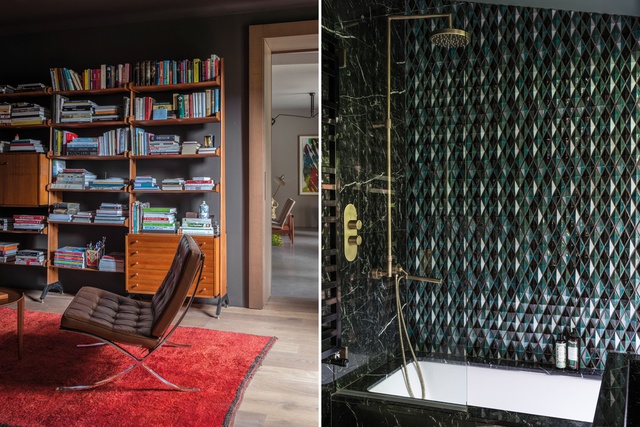
The library functions as a ‘security gate’ between the two sections of the house, in part because Magnani likes to lock himself away in there to watch sport and also because this is where he keeps his favourites from an extensive collection of street art.
One such piece is the stencil painting Portrait of Samuel Beckett by Orticanoodles, which is sprayed onto old wooden boards. The dark-brown walls here act as a prelude to a different world of colour, consisting of earth and mud tones. They signify the older epoch and also act as a demarcation of the private areas of the house.

Here, warm oak flooring is echoed in the hall and the dining room, as well as in the three bedrooms on the storey above, where there’s enough space for Kollhof and Magnani’s four grown-up children when they come to visit.
In order to emphasise the connection with the building’s exterior, the couple opted to use local stone for the floor of the kitchen. Optically, this area transitions seamlessly onto the terrace and the zen-like patio.
Outside, a small stream cascades past the house, flowing beneath the terrace before joining the nearby lake, a glimpse of which can be caught through the narrow alleyways and over the rooftops of the village.
Prior to moving to this house, the German/Italian couple lived for many years in Milan: a city they both love and which provides them with great inspiration. However, their new home in Morcote represents the essence of everything that binds them together; it is filled with carefully chosen pieces and with a colour scheme and interior design they both developed.
Magnani admits that: “It’s exactly as we imagined it – if I could, I would never leave this place.” If only it weren’t for the job in Florence, the exhibition in Madrid and the wedding in India the week after next… that might just be possible.
This article first appeared in Urbis magazine



